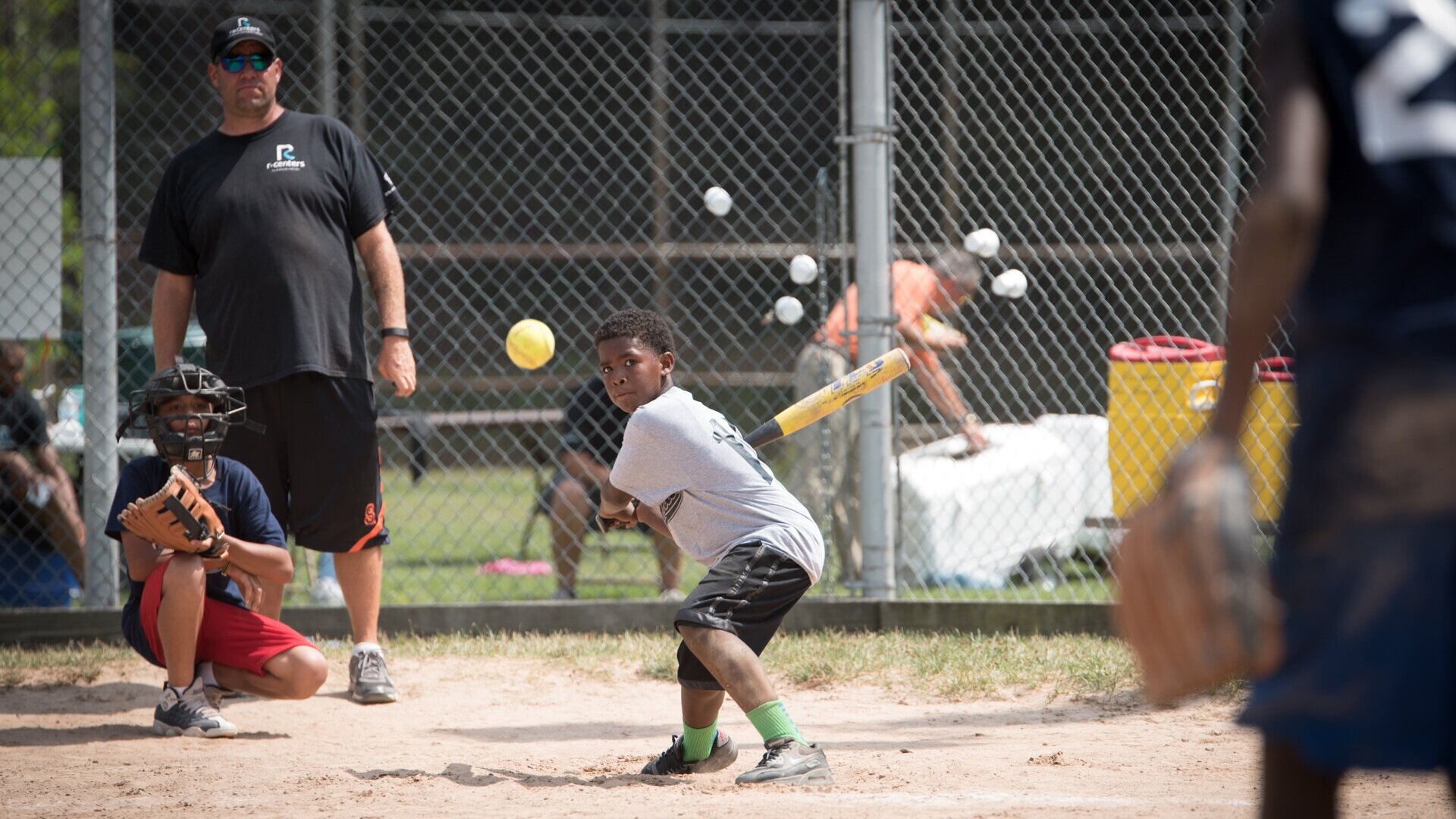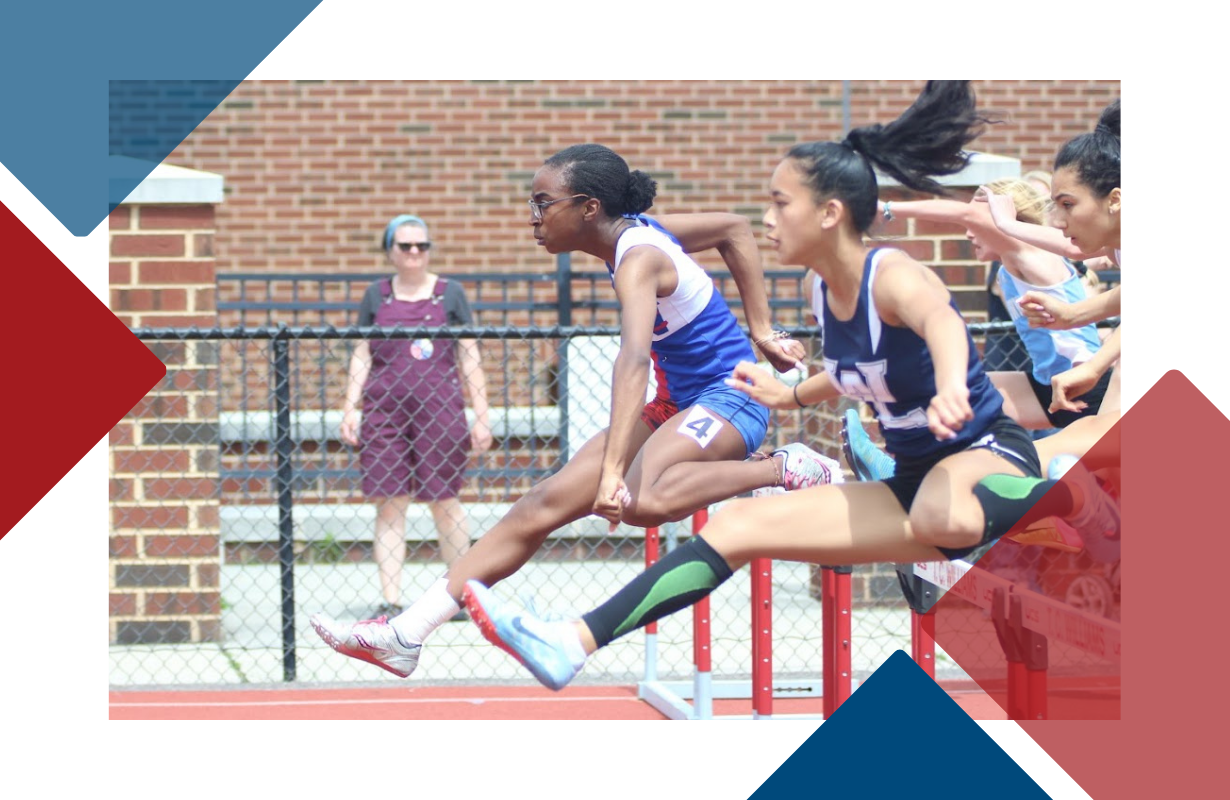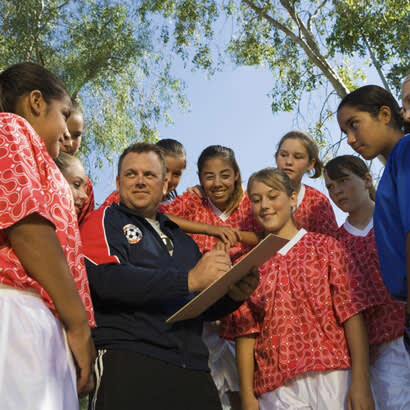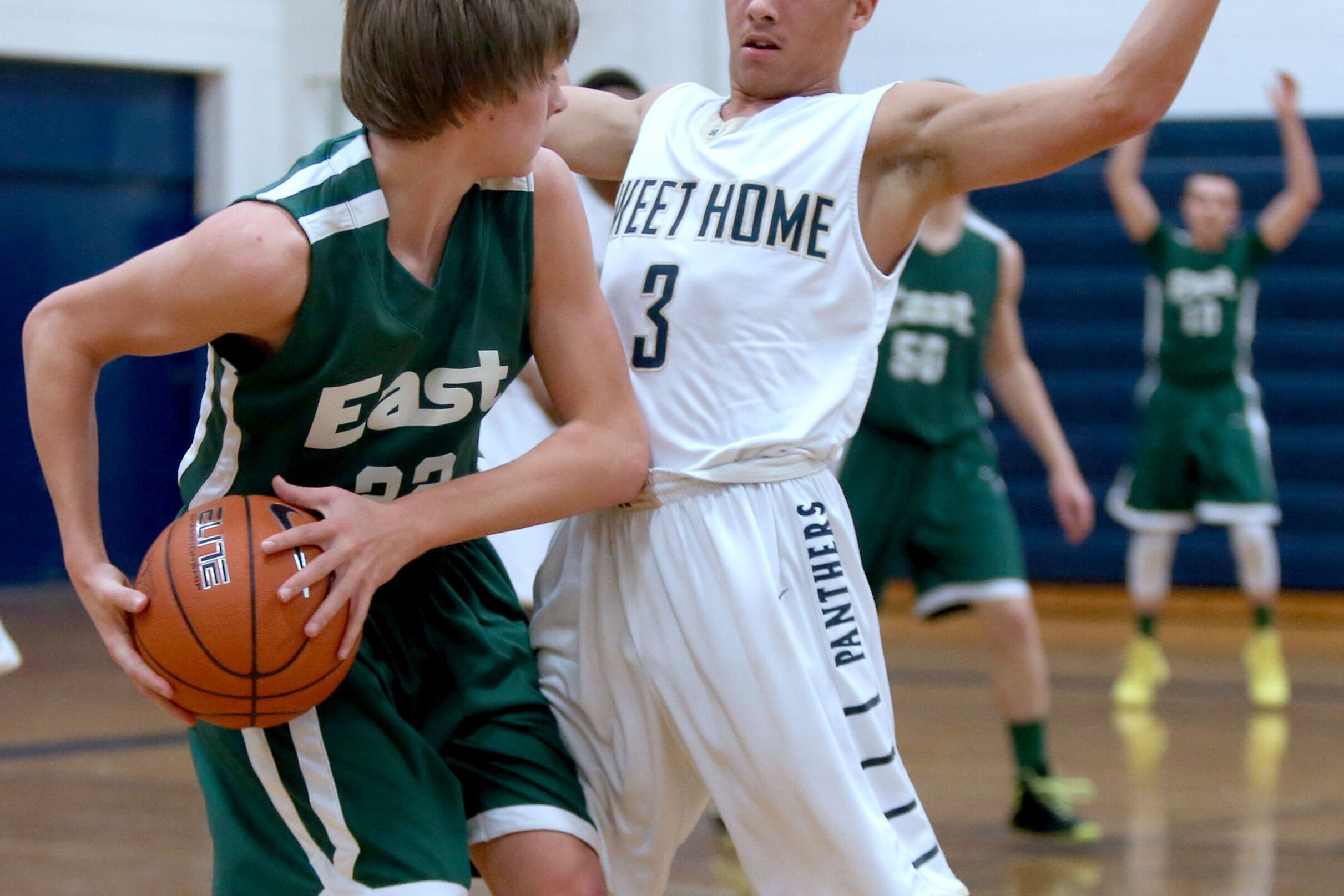These are unprecedented and scary times. Youth sports is playing its role in helping America get through the coronavirus pandemic.
Communities no longer gather at fields, gyms and tracks for organized games and practices. School sports are off, as is school itself. Children are often cooped up at home, if they have a home. Last year, about 38% of kids played a team sport on a regular basis. Today, that’s surely close to zero. Kids are losing their social, emotional and cognitive benefits from sports.
Eventually, sports will return. What might the future hold? On April 1, the Aspen Institute’s Project Play hosted our first webinar to help youth and school sports stakeholders navigate the challenges and opportunities ahead. Tom Farrey, executive director of the Institute’s Sports & Society Program, offered three anticipated outcomes based on the latest information and our own research, and invited three experts to advance the conversation. We also invited the more than 2,200 participants in the webinar to share their thoughts through live polls. Below are highlights from the discussion.
ANTICIPATED OUTCOME NO. 1:
Organized youth and school sports won’t return until May at the very earliest, more likely summer, and quite possibly the fall.
Why: Even if we start to flatten the curve by end of April, there will still be a lot of contagious people in our society – making gatherings of 10 or more inadvisable. Even if government lifts that restriction, enough parents and leaders will still understand the need for social distancing. And that, in turn, will limit the ability to form teams/events.
Dave DuPont, CEO, TeamSnap, which surveyed 10,000 of the organizations using its software: “I emphatically agree that we won’t see a return to youth sports immediately. Our best guess is it will start to take place at the beginning of July, build slow momentum over the summer, and we believe that 75% of (participants) will be back in action this coming fall.”
Dev Pathik, Founder and CEO, Sports Facilities Advisory: “There’s the curve of the disease and then there’s the curve of the economy, and the economy is going to follow the disease. As we start slowly seeing people gather first at school and then at work, that’s when the consumer confidence will be there to really decide to play. Back to work is back to sport and back to school is back to sport.”
Bethany Rubin Henderson, CEO, DC SCORES: “I think we’re looking at a longer timeframe. I certainly think back to school means some form of back to sport. I think there may be a little bit of a difference between team sports and individual sports and the difference between back to sport intramural and back to sport league. Because even when we go back to school, there’s still a contained ecosystem. Once you start having cross-league games, you’re mixing people from all different types of communities, which seems to be the problem that’s driving the pandemic crisis now. I think one of the questions that remains unanswered is if there’s a second surge – as some epidemiologists have predicted for the fall – what impact that will have on sports, and schools for that matter.”
DuPont: “I can tell you the impact is devastating (if there’s no return to sports in the fall). These organizations depend to a significant extent on participation fees. When activity drops to almost zero, they’re not seeing money coming in, and they’re cancelling seasons. At this point, many organizations are just trying to survive.”
Henderson: “The question of whether the philanthropic ecosystem will keep up I think is a really big one. We’re going to have not only the kids we had three weeks ago before we shut down, but I think we’ll have hundreds of thousands of (new) children across the country who have been priced out of the pay-to-play system by the economy. … What’s missing from the stimulus packages so far is the ongoing challenges that nonprofits dependent on the philanthropic ecosystem face because the challenges to philanthropy are going to lag.”
Pathik: “For facilities, you have to say this (crisis) is date-driven and we know we’ll be there on the other side, so we need to be prepared as an organization and staff. I think there are two committees you have to form. One is security. That looks at mortgage statements and ways to reducing fixed operating expenses and insurance costs and determine if you qualify for federal aid. Getting the (federal stimulus bills) applications in is important. And on the other side, you have to start thinking about how you’re going to provide sanitation and think about programming that doesn’t provide the close proximity that most programs do today. You’ll have to offer brand new opportunities for kids to participate in that fit some of the social distancing guidelines that I think are going to be here for a while.”
Poll of webinar participants, n=101
ANTICIPATED OUTCOME No. 2:
When the virus restrictions lift, we will see greater demand for organized youth and school sports programming – but potentially less supply and less participation
Why: Because with kids cooped up at home during the void, there is a heightened appreciation among parents for keeping kids active. But the economy will limit what parents and schools can afford. We know what happened in the last recession – regular participation in team sports fell from 45% in 2008 to 38% in 2014 among kids.
Henderson: “Even if the curve starts to lift, and we start to have gatherings of 5, 10, 20 people, you still can’t run a league. There may be a shift in what sports kids are doing. Individual sports can actually distance kids out further. You can’t do that on a soccer field or a basketball court the way you can with a running group or playing tennis. I also wonder if we’ll see a shift in where sports are offered. Is it going to be viable for all of the existing outside-school clubs that have grown up over the past few decades to continue to operate, or are we going to see more need and demand within the schools?”
Pathik: “I think programming will need to cater to recovery from this. We’re preparing for a very traumatic experience. To lose 100,000 people (deaths from COVID-19) or more will traumatize our country. The opportunities that parks and rec facilities will provide to allow people to gather safely, to use best practices and sanitation, to model that you can come together, they really will be important locations to bring community back together.”
DuPont: “Organizations are not going to survive. There aren’t going to be as many around. … We’re not going to be able to flip the switch (with programming) and I think this is going to force innovation. We’re hearing from all of our customers that kids want to go outside and play now. In a couple months, there will be even more of a demand, but there will not be the supply or organized sports activities.”
Henderson: “I worry the most about the kids who are currently outside the youth sports infrastructure – the kids in the inner cities and lower-income communities. … What they’re going to need from their coaches and teammates is not just the sense of normalcy, but also processing this horrible experience that we’re all collectively going through. How are we as teams and leagues thinking about that? It’s beyond the scope of most coaches. They’re coaching soccer. They’re coaching basketball. We need every coach to really be focusing on that social and emotional health of those children.”
Pathik: “I think we’re going to see governments continue to spend money on things they see as economic development projects and they’re going to cut parks and recreation budgets and programming that they don’t see related to economic development. … It’s really incumbent on our youth-serving organizations to establish and clarify what their value proposition is to the community and begin conversations about public and private partnerships now. Do that at the highest levels of your local government. That’s an action that local organizations can take. Pick up the phone. Don’t wait. Treat this as the emergency for kids that it is and ask your local officials to engage with you in a conversation about how sport and local recreation will benefit our low-income communities.”
Henderson: “If we can bring athletics back to our schools – there’s a problem now with PE, there’s a problem with recess – how do we engage our communities so everybody understands the importance of kids moving? Because when kids have to go elsewhere (for sports), that creates the divide that we’re seeing and is being exacerbated now.”
Farrey: “I think the role of pro leagues and the NCAA as we move forward is not just ask how do we get our product up and going again? That’s a natural impulse. But how do we play a useful role in a sports system that takes care of the base? All of these pro leagues exist because kids fell in love with sports at some point. If we see a major dip in participation, and people aren’t falling in love with sport and aren’t experiencing it themselves, this will wreak havoc on spectator sports down the road. They need to be part of this conversation.”
Poll of webinar participants, n=1304
ANTICIPATED OUTCOME No. 3:
The misalignment between the demand for, and supply of, quality affordable sport activity could lead to new models that better meet the needs of children and families
Why: Because the existing model is dysfunctional at best, broken at worst. The downturn in the economy will reveal as much, making club team sports less accessible to more families. At the same time, parents and kids have learned a few things during the void – the rediscovery of free play, family activities, and outdoor sports. They will have new habits. Will they just want to go back to the old way with no adjustments?
Pathik: “I think the private sector tournament and events marketplace will go through some significant consolidation. It will downsize and right-size because a lot of event owners rely on the revenue they’re going to miss this season. … We can’t fully blame the private sector for stepping in and figuring out how to make a dollar. We have to frankly thank them for at least getting those kids to play. We have to come back to who’s funding sport and why, and we have to equip local government officials – not federal officials right now – with the data to help them understand why keeping rec and sport in the budget is important for the health of the entire community.”
DuPont: “I’m an optimist. I believe the crisis will accelerate the development of new models. … I think we should be looking for ways to encourage pick-up play, which I think has significantly vanished from the American scene. I have very fond memories for years of just informally meeting at 5 o’clock at the local field and playing football and everybody showed up. We’ve lost that and we have the opportunity to bring that back. That’s not expensive and it’s not exclusive of all the other sport opportunities going on.”
Henderson: “Free play is great, if there’s a physically safe place for the kids to do that. And that doesn’t just mean a court that’s not chewed up. It means a place that’s not overrun by a drug dealer or gangs or pick whatever the issue is in the community. One of the ways we overcome that at America SCORES is we send out coaches even for free play experiences. There’s an adult there, someone they know they can trust and be there for them. How can we duplicate things like that for all kids in all communities no matter the resources? Maybe it goes to the county level or city level where there’s a sports czar to make sure all kids have access.”
Farrey: “It makes me wonder if we’ll see more enthusiasm or create a scenario for more in-town rec leagues and hold off the travel team environment. Instead of sorting the weak from the strong when they’re 6 or 7 years old, promote more low-cost, local activity that’s more inclusive and more affordable for more families, at least through grade school.”
Do you have a topic that you would like Project Play to explore in future COVID-19 youth sports coverage? Email Jon Solomon at jon.solomon@aspeninstitute.org.























